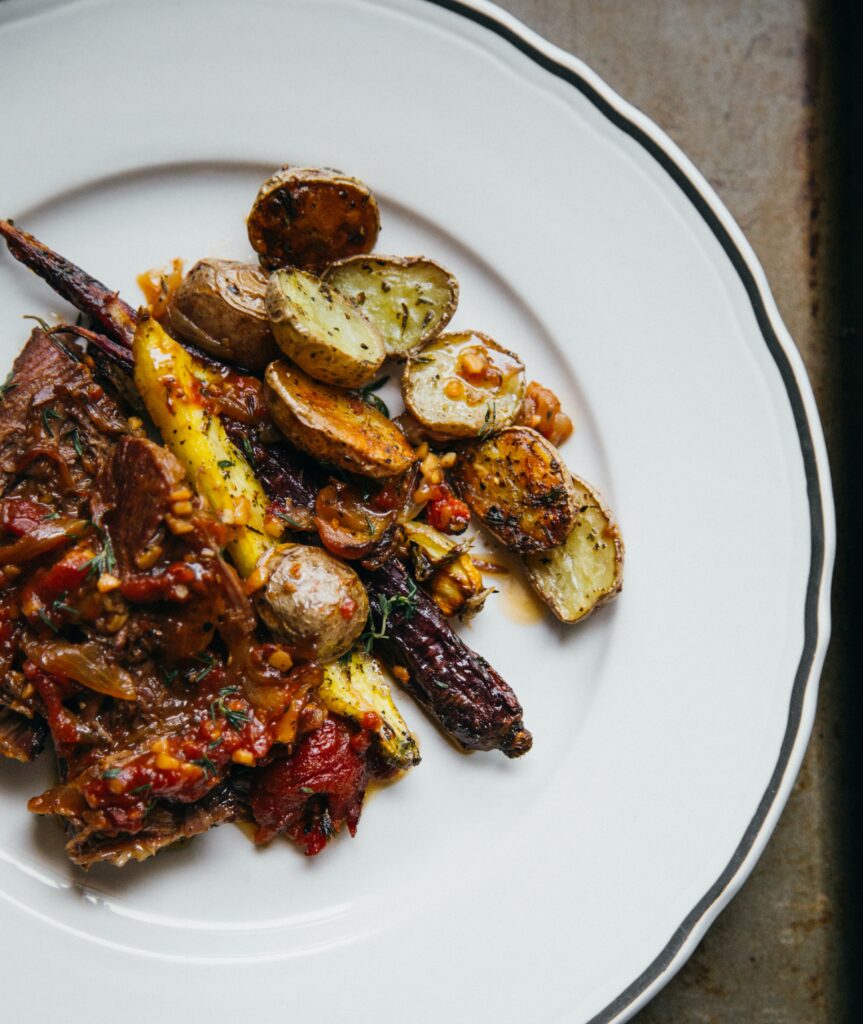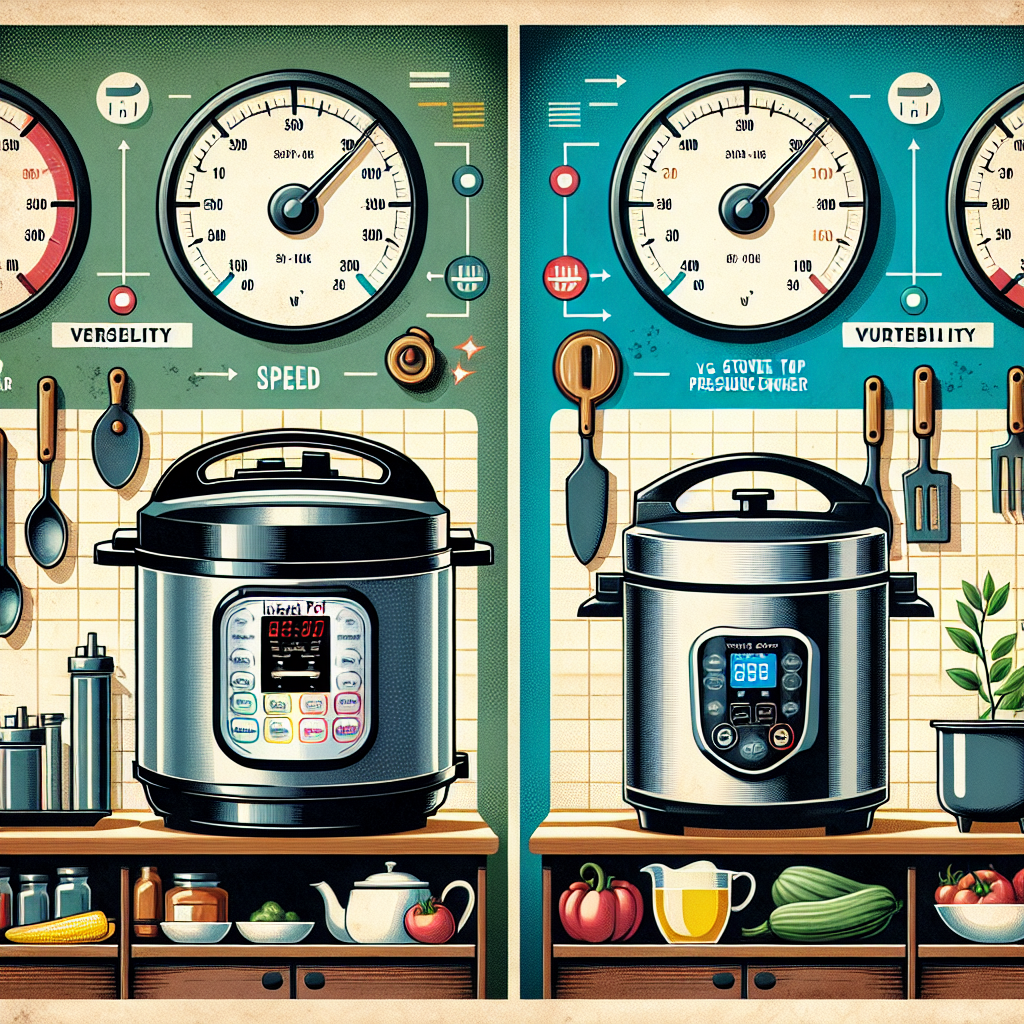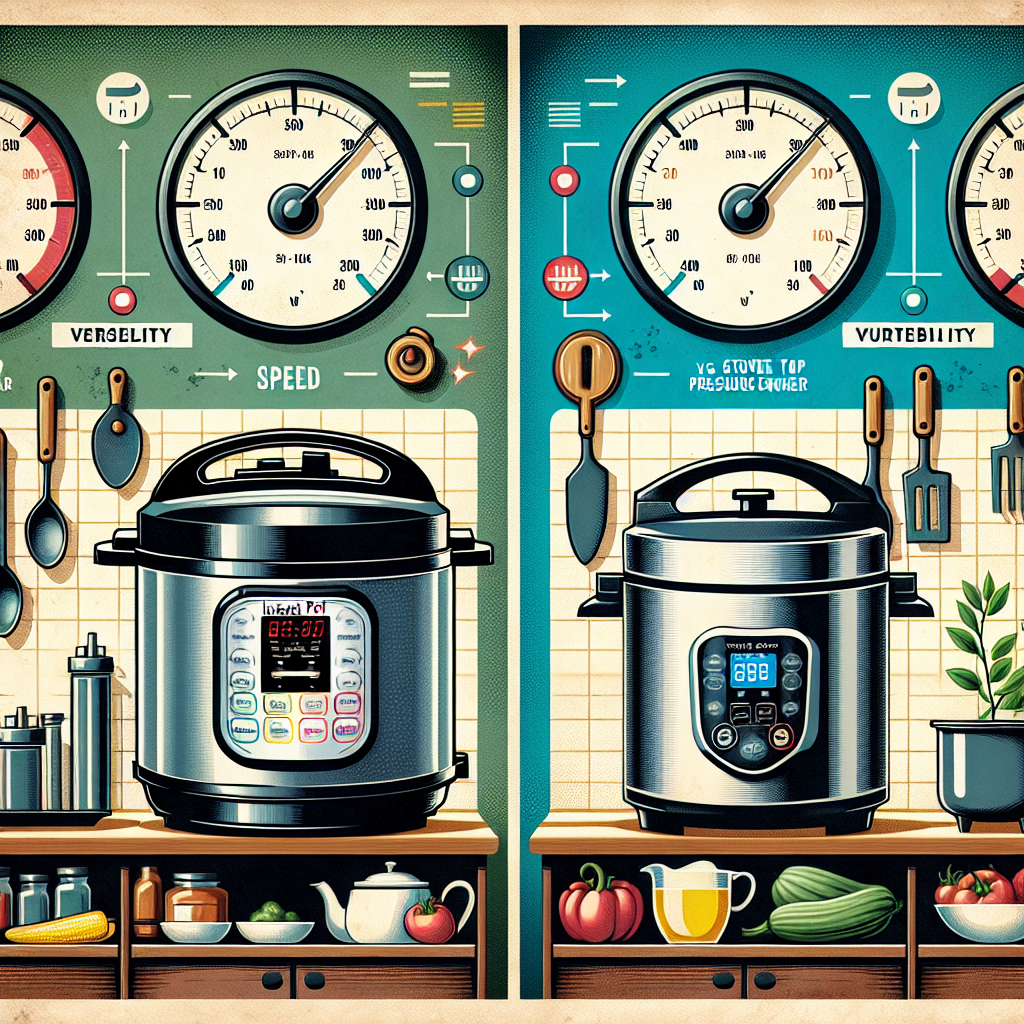Can The Instant Pot Do Anything A Stovetop Pressure Cooker Cant: Introduction
Get ready to level up your cooking game with the Instant Pot! In this article, we explore whether this popular kitchen gadget can match the capabilities of a traditional stovetop pressure cooker. We’ll uncover the unique features and functions of the Instant Pot that set it apart, as well as examine any limitations it may have. Whether you’re a culinary pro or just starting out, join us as we answer the question “Can The Instant Pot Do Anything A Stovetop Pressure Cooker Cant? Uncover the secrets behind this modern marvel and discover if it truly lives up to the hype.
Overview of Instant Pot and Stovetop Pressure Cooker
When it comes to cooking at home, efficiency and convenience are key factors in choosing the right kitchen appliances. Two popular options for fast and easy cooking are the Instant Pot and the stovetop pressure cooker. Both offer the ability to cook meals quickly and effortlessly while retaining the flavors and nutrients of the ingredients. In this article, we’ll provide a comprehensive comparison of these two cooking methods to help you decide which one is best suited for your needs.
Features of Instant Pot
The Instant Pot has become a beloved kitchen appliance for many households. Its multifunctionality is undoubtedly one of its standout features. With the Instant Pot, you can not only pressure cook, but also slow cook, sauté, steam, and even make yogurt. This versatility can be a game-changer for those who want to explore various cooking methods with just one appliance.
Another notable feature of the Instant Pot is its programmability. You have the option to set the cooking time and temperature according to your recipe’s requirements. This ensures that your dishes are cooked just the way you like them, with minimal effort and no guesswork.

Features of Stovetop Pressure Cooker
On the other hand, stovetop pressure cookers have been around for much longer and have their own set of advantages. One of the significant features of stovetop pressure cookers is their simplicity. These cookers consist of a pot, lid, and a pressure release valve, making them straightforward to use. They don’t require complicated programming or learning curves, which can be appealing to those who prefer a more traditional cooking approach.
Stovetop pressure cookers also excel in their ability to reach higher pressure levels compared to electric pressure cookers like the Instant Pot. Higher pressure allows for faster cooking times and better tenderizing of meats. Additionally, stovetop pressure cookers often come in larger sizes, making them ideal for batch cooking or preparing meals for a larger family.
Comparison of Cooking Methods
Cooking Speed
In terms of cooking speed, both the Instant Pot and stovetop pressure cooker offer significant advantages over conventional cooking methods. However, stovetop pressure cookers have the edge in this category. Due to their ability to reach higher pressure levels, stovetop pressure cookers can cook food faster than the Instant Pot. If you’re looking for a quick meal with minimal waiting time, a stovetop pressure cooker might be the better choice for you.
Energy Efficiency
When it comes to energy efficiency, the Instant Pot takes the lead. Electric pressure cookers, like the Instant Pot, are designed to retain heat efficiently, resulting in less energy usage compared to stovetop pressure cookers. The insulation and automated temperature control in the Instant Pot allow it to preserve heat and cook food with less electricity or gas consumption. If sustainability is a factor you consider, the Instant Pot may be the greener option.
Ease of Use
In terms of ease of use, the Instant Pot holds a clear advantage. Its programmable functions and pre-set cooking options make it extremely user-friendly. Simply select the desired cooking mode, set the time and temperature, and let the Instant Pot do the rest. On the other hand, stovetop pressure cookers require more manual control and constant monitoring to ensure proper cooking. If you prefer a more hands-on cooking experience, a stovetop pressure cooker might be your preferred choice.
Safety Features
Both the Instant Pot and stovetop pressure cookers have built-in safety features, but the Instant Pot offers more advanced safety mechanisms. Electric pressure cookers like the Instant Pot have multiple safety sensors and automatic shut-off functions to prevent accidents or mishaps during cooking. Stovetop pressure cookers rely on the user’s vigilance and manual control to ensure safe operation. If safety is a top concern, the Instant Pot’s advanced safety features provide added peace of mind.

Versatility in Cooking Options
Multiple Cooking Functions
The Instant Pot shines in terms of versatility. With its multiple cooking functions, it eliminates the need for separate appliances in the kitchen. In addition to pressure cooking, the Instant Pot can be used for slow cooking, sautéing, steaming, and even yogurt making. This wide range of cooking options allows for experimentation and creativity in the kitchen, making it a favorite among home cooks who want to explore various cooking techniques.
Yogurt Making
One of the unique features of the Instant Pot is its ability to make yogurt. This functionality is not typically found in traditional stovetop pressure cookers. With just a few steps and the right ingredients, you can easily make homemade yogurt using the Instant Pot. This added capability can be a significant advantage for those who enjoy homemade yogurt and want to save time and effort in the process.
Sauteing and Browning
Another standout feature of the Instant Pot is its sauté function. Unlike stovetop pressure cookers, the Instant Pot allows you to sauté ingredients directly in the same pot before pressure cooking. This feature eliminates the need for an additional pan and simplifies the cooking process. It also allows for enhanced flavors and textures by browning meats or caramelizing vegetables before pressure cooking.
Slow Cooking
While stovetop pressure cookers can achieve high pressure and fast cooking times, they often lack a slow cooking function. The Instant Pot, on the other hand, excels in this area. It offers a slow cooker function that allows you to cook dishes at a lower temperature over a longer period. This is ideal for preparing tender roasts, stews, or soups that require longer cooking times for flavors to develop. The Instant Pot’s slow cooking function provides the convenience of a slow cooker without the need for an additional appliance.
Customization and Control
Temperature Control
The Instant Pot offers precise temperature control, allowing you to fine-tune the cooking process according to your specific needs. With its customizable temperature settings, you can achieve precise results for delicate dishes that require gentle heat. This level of control can be particularly useful for those who enjoy sous vide cooking or need precise temperatures for certain recipes.
Pressure Control
Stovetop pressure cookers rely on manual control for pressure regulation. By adjusting the heat intensity, you can achieve the desired pressure level for your cooking. While this manual control allows for flexibility, it may require more experience and attention to detail to achieve consistent results. In contrast, the Instant Pot regulates pressure automatically, removing the need for constant monitoring and adjustment.
Programmable Options
One of the Instant Pot’s standout features is its programmability. With its pre-set cooking modes and programmable options, you can easily set the cooking time, temperature, and pressure level according to your recipe. This feature provides convenience and precision, especially for busy individuals who want to come home to a freshly cooked meal. Stovetop pressure cookers lack this automation and require manual monitoring and adjustment throughout the cooking process.

Size and Portability
Portability of Instant Pot
In terms of portability, the Instant Pot offers convenience due to its compact and lightweight design. It is a standalone appliance that can easily be moved and stored without much hassle. This makes it a great option for those who have limited kitchen space or frequently need to transport their cooking equipment.
Versatility in Size
While stovetop pressure cookers generally come in larger sizes, they offer flexibility in terms of capacity. Stovetop pressure cookers are available in various sizes, allowing you to choose the one that best suits your cooking needs. Whether you’re cooking for a small family or preparing meals for a large gathering, stovetop pressure cookers offer options to accommodate different serving sizes.
Ease of Cleaning
Instant Pot’s Inner Pot
The Instant Pot’s inner pot is typically made of stainless steel, which makes it durable and easy to clean. Most models are also dishwasher safe, eliminating the need for extensive hand washing. This convenience is a significant advantage for those who prioritize quick and hassle-free clean-up after cooking.
Stovetop Pressure Cooker’s Parts
Stovetop pressure cookers usually consist of multiple parts, including a pressure release valve, sealing gasket, and safety valve. While these parts contribute to the efficient functioning of the cooker, they can pose a challenge when it comes to cleaning. Each part needs to be disassembled, cleaned thoroughly, and reassembled, which can be time-consuming and requires attention to detail.

Durability and Longevity
Material Quality
Both the Instant Pot and stovetop pressure cookers are typically made with high-quality materials. The Instant Pot’s outer body and inner pot are commonly constructed with stainless steel, ensuring durability and resistance to rust or corrosion. Stovetop pressure cookers are often made with aluminum or stainless steel, offering similar durability and longevity. When properly cared for, both options can last for many years of cooking.
Sealing Mechanism
One area where stovetop pressure cookers may have an advantage is the sealing mechanism. Stovetop pressure cookers often use a metal-to-metal seal with a locking feature, providing a strong and secure closure. The Instant Pot, on the other hand, uses a silicone sealing ring, which may need replacement over time due to wear and tear. However, the availability of replacement rings makes it easy to maintain the sealing effectiveness of the Instant Pot for prolonged use.
Price and Affordability
Cost of Instant Pot
The price range of Instant Pot models can vary depending on the size and features. Generally, Instant Pots are considered affordable, with entry-level models being quite budget-friendly. As you move up the range and opt for larger sizes or additional functionalities, the price may increase. However, compared to the versatility and convenience it offers, many users find the Instant Pot to be a worthwhile investment in their cooking journey.
Cost of Stovetop Pressure Cooker
Stovetop pressure cookers come in a wide range of prices, depending on the brand, size, and materials used. While some models may be more expensive than entry-level Instant Pots, there are also budget-friendly options available. Stovetop pressure cookers are generally considered a cost-effective cooking method, especially if you prioritize efficiency and durability.
User-Friendliness and Learning Curve
Instant Pot’s Pre-Programmed Settings
The Instant Pot’s pre-programmed settings make it incredibly user-friendly, even for those who are new to pressure cooking. With the touch of a button, you can easily select the appropriate cooking mode, and the Instant Pot will take care of the rest. This simplicity reduces the learning curve and allows beginners to experiment with various recipes confidently.
Stovetop Pressure Cooker’s Manual Control
While stovetop pressure cookers lack the automation of pre-programmed settings, they offer a more hands-on cooking experience. The manual control allows you to make adjustments on-the-fly and customize the cooking process to suit your preference. Although it may require some trial and error to find the perfect cooking times and pressure levels, many experienced cooks appreciate the control and flexibility offered by manual operation.
Conclusion
Both the Instant Pot and stovetop pressure cookers have their distinct advantages and considerations. The Instant Pot’s versatility, programmability, and ease of use make it a popular choice for those who seek convenience and a wide range of cooking functions. Conversely, stovetop pressure cookers offer faster cooking times, higher pressure levels, and a more traditional cooking experience. Understanding your cooking needs, preferences, and budget will ultimately help you determine which cooking method is the best fit for your kitchen. Whether you opt for the modern convenience of the Instant Pot or the simplicity of a stovetop pressure cooker, both options can elevate your cooking game and bring delicious meals to your table with ease.




